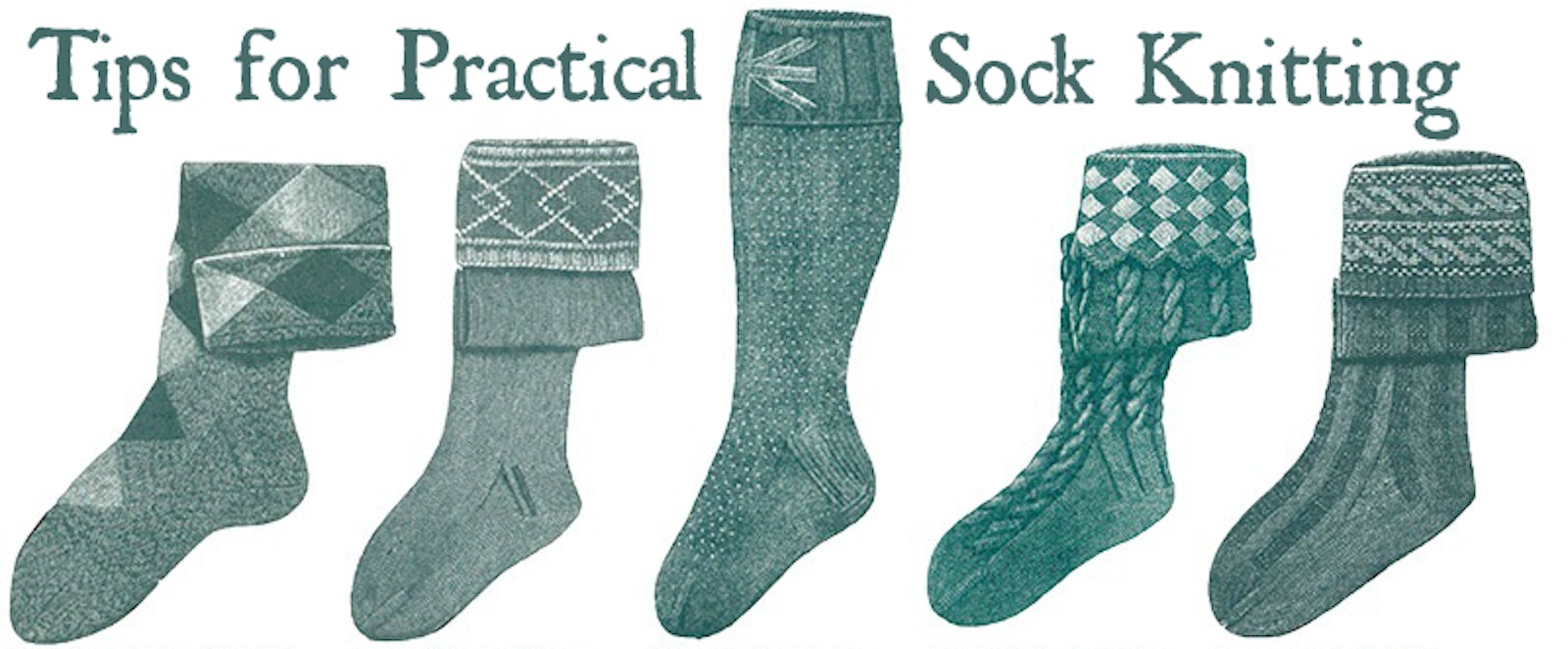In her article about the role of handknit socks in the Civil War, Karin Timour reveals a fascinating history:
“It rained or snowed as often as every third day while we were out and we had to poke along through the mud at the average rate of fifteen miles per day. Since the 14th of Jan we have marched over 400 miles. . . . I have worn out three pairs of shoes . . . and a part of the time my feet have had nothing between them and the rough stones.” —February 21, 1863, letter of John Follett, Company H, 33rd Illinois Volunteer Infantry
Men’s half-hose. Maker unknown. Knitted. Wool. Origin and date unknown. Collection of Karin Timour.
After reading a letter like that from a husband or son, a woman’s first thought probably was to send him new shoes or at least several pairs of socks. Over 2.8 million men were marching during the American Civil War (1861–1865), and wives, mothers, and the girls left behind worried, prayed—and knitted as they never had before. Store-bought socks were a relatively new idea; most were made at home. Before the war, knitting ten pairs a year was considered a remarkable accomplishment; after the war started, outstanding knitters were producing three pairs a week.
Download the March/April 2009 issue of Piecework to read the rest of this amazing article, and peruse photos of Civil War socks and illustrations from the time period, and! Patterns for both Union and Confederate socks are included. What made Union and Confederate socks different?
- Union socks were thicker (Confederate socks were worked on VERY SMALL NEEDLES, like 00)
- The toes: Union toes were round, Confederate toes were shaped with three-point double decreases
- The heels: Union went Dutch, Confederate used the common heel
The common heel was common at the time, but it really was not a good choice for socks being worn by soldiers on the move, day in and day out—the seam on the bottom of the common heel does not follow the natural shape of the foot, and it seems like it would be bumpy. Though at this gauge, perhaps not!
Karin also notes that the scarcity of wool yarn in the South during the war had on impact on the sock supply for soldiers there—a scarcity caused by interruption to ports and imports, and the fact that the South didn’t have many sheep. So those industrious sock-knitters also took to spinning their yarn, but they couldn’t get their hands on the proper equipment for that, either—there was a shortage of handcards, which require metal.
Karin Timour’s knitted Civil War socks. Left to right: light gray Union sock, charcoal gray Confederate sock, and brown Confederate sock. Patterns available in Piecework March/April 2009.
So these women were chasing down raw wool fiber, then chasing down handcards, spinning their own very fine yarn, the knitting socks on size 00 needles, and churning out 3 pairs a week in some cases! Or they were sharing these steps of the production process across communities, but still. What an incredible effort.
Would these knitters and the recipients of their socks have benefitted from modern sock knitting techniques and tools? It’s possible; many people find magic loop or two-circulars faster to knit with than double points. Toe-up construction might have led to more efficient yarn usage. Nylon-wool blends seem more hardy to us now, and they do add some resilience and elasticity to socks, but the synthetic is not flame-safe, as Karin points out—if you knit socks for a Civil War re-enactor, avoid nylon, as these folks often warm their feet by fires, just as soldiers in the 1800’s would have done. So 100% wool really was best for the soldiers. Colorful, modern hand-dyed yarns might have cheered the women as they knit sock after sock, and might have cheered the men, cold and homesick and sent into horrendous situations.
As we step into February, think about John Follet, writer of the letter at the opening of this post. It was February and he had marched 400 miles in just over a month’s time, sometimes barefoot. When you pick up your sock project, think about how important that sock would have been to John. Meditate for a moment on that. We are keepers of an incredible craft, and of a heartbreaking legacy that must never be forgotten.
—Lisa



